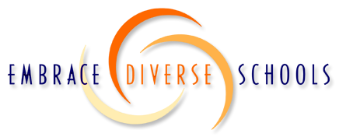Understanding Our Diverse Students by Understanding Ourselves First
By: Eileen Kugler
The principal considered the new student in front of her. She was concerned about Carlos’ disrespectful behavior. “You look at me while I’m talking to you!” Mrs. Harris admonished.
What Mrs. Harris didn’t realize is that Carlos was being respectful. While the principal had been taught to look people in the eye when they are speaking to you, Carlos had been taught to be deferential to an authority figure by looking down. This wasn’t about who was right or wrong at that moment, this was about the assumption of what is right by each person.
When I lead professional development on strengthening school culture, we explore the issue of respect because it’s such a vital part of a student’s self-concept — and the success that flows from feeling valued. We tend to think there is a common understanding of respectful behavior. But the assumption of what is respect — what is “right” — comes from our own personal culture, a complex web of race, ethnicity, family background, and experiences. This is the prism through which we see and evaluate the actions of others.
Looking someone in the eye is just one piece. Many teachers will say they expect students to calmly listen without interrupting. Yet I was raised in a boisterous house where you showed you were really listening by interrupting and finishing the other person’s sentence. Deborah Tannen, noted expert on interpersonal communications, even has a name for this — she calls it “overlapping conversations.” There are many other issues that come up as teachers reflect on their own assumptions, such as what is “too close” to stand next to someone and what is considered being “on time.”
The bottom line is that every educator brings assumptions based on her or his personal culture into the school. The tough, and critical part, is reflecting on our own culture, how this created our assumptions, and how that affects interactions with students and their families.
This doesn’t mean we can’t help students understand what’s appropriate in school. But we must do it in a way that respects who they are without a value judgment based on our own prism.
We also have to consider our own behavior. We can learn from others only when we don’t assume our ways are always right. A teacher told me she realized that she expected her 3rd graders to be very organized at all times because she learned that value from her parents. But she came to see that this was an unreasonable expectation for her entire class; and, in fact, she might be making herself too anxious about organization at times.
And there are many areas of gray. For example, what some teachers consider a noisy and raucous classroom may sound like a room of engaged learners to others.
Introspection reveals how elements of our personal culture — our prisms — color our expectations every day. Did your immigrant grandparents believe it was essential to learn English and leave behind the language of their home country? Did your father teach you to always be 10 minutes early or you were late? Did your mother feel it was her duty to know all your teachers personally, no matter how busy she was? Did you grow up in a large family where teasing what just a part of daily life? Were you taught that girls who took charge are bossy? Each of these affect how you view the behavior of your students, their families, and yes, your colleagues.
Introspection enables us to understand ourselves better and thereby understand our students better. Without introspection, we assume our way is the right way, although it may just be a different way. With introspection, we learn to respect student’s ways of doing things and are open to learning from them.


